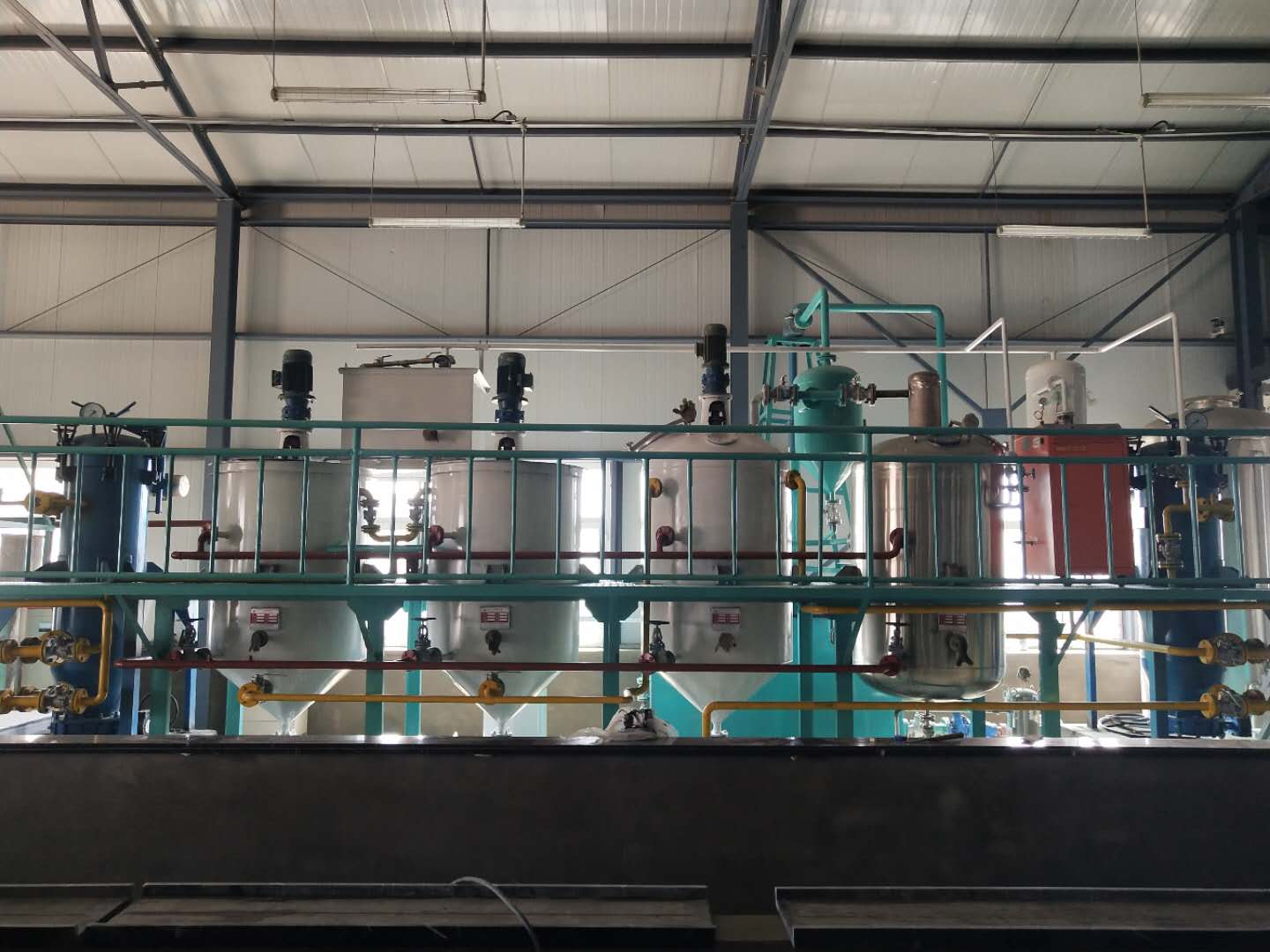Soybean crude oil is a product obtained by squeezing or leaching vegetable oils. Some harmful substances contained in crude oil are naturally occurring, and some are produced during production or storage. Due to the different sources of these impurities, the soybean oil refining process must be carried out in several steps under different conditions. With the difference of crude oil, soybean oil refining process can be divided into several steps: degumming, neutralization, decolorization, deodorization, etc., according to the type of crude oil, one of these steps or all soybean oil refining processes can be used.

Soybean oil refining and degumming is the first step of the soybean oil refining process. The soybean oil refining and degumming process only includes the hydration of crude oil. Some impurities such as phospholipids, gums and proteins are dissolved in the oil when there is no water. Once hydrated It cannot dissolve in oil. This is the principle of hydration and degumming. However, there is still some gum in the oil after hydration, which requires acidification to remove it.
Alkali refining and neutralization is the second step of the soybean oil refining process. Alkali refining neutralization is to neutralize the free fatty acids in the oil with caustic soda to saponify them. After the free acid is saponified, it is no longer soluble in water, so it can be precipitated or centrifuged. After removing the free acid, the neutralization cannot be completed because the non-hydratable phospholipids must be removed at this stage. In addition, it also reduces the amount of minor components such as metal ions and pigments.

Soybean oil refining and decolorization is the third step of the soybean oil refining process. The decolorization process uses suitable adsorption materials to remove pigments such as carotene and chlorophyll. Soybean oil refining and decolorization has become a more important process, which is an important process to remove residual phospholipids, metal ions and oxides before deodorization. In addition, the removal of other impurities is also very important, because it can directly affect the sensory flavor and oxidation characteristics of the deodorized oil.

In most cases, deodorization is the last step in the soybean oil refining process. The main purpose of soybean oil refining and deodorization is to remove substances that affect the odor and taste of the oil. In physical refining, it can also remove free acids. Soybean oil refining and deodorization process can be continuous, semi-continuous or batch, depending on application selection, oil type and production scale. Generally speaking, the three steps of soybean oil refining and deodorization are as follows:
1. Gas-splitting heating: Before the decolorized oil is heated by heat exchange with the deodorized oil, the air in the oil should be exhausted at first.
2. Deodorization: Steam is injected through a series of pumps, and the oil fully contacts the steam under the agitation of the steam, and the steam is evenly dispersed in the oil.
3. Cooling: The oil is cooled by heat exchange under vacuum conditions.
Copyright © Henan Zhongxing Grain And Oil Machinery Co.,Ltd. All Rights Reserved. Powered by MetInfo